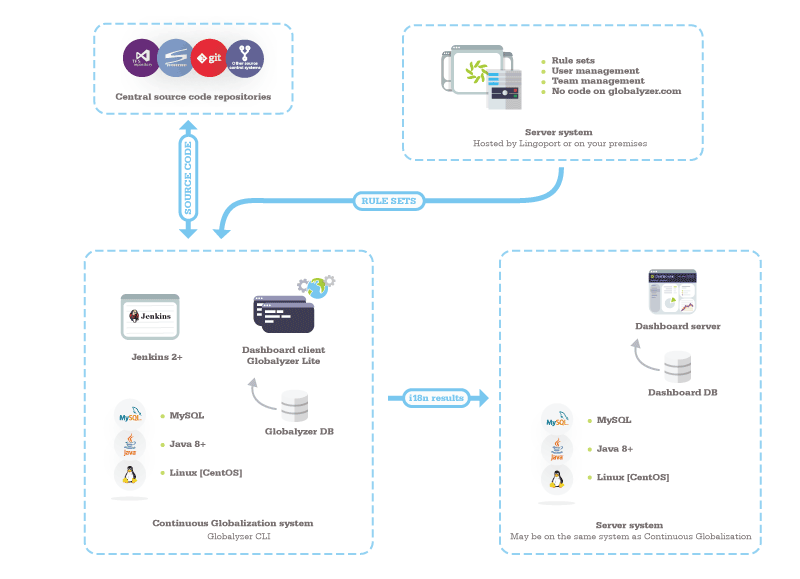Globalyzer Lite for Continuous Globalization
Introduction
Globalyzer Lite can be deployed on a Continuous Globalization system. It allows i18n scanning of a project based on a Globalyzer project definition xml file saved filed most likely at the top level directory of the source code; the results are then pushed to the Dashboard.
Target User
The results are presented via the Dashboard for any registered users, such as development team members, development management, i18n specialists, L10n management, translators, QA, etc.
The typical Globalyzer Lite actor is a Jenkins system which automates the tasks of scanning and pushing the results to the Dashboard.
Typical Deployment
The Globalyzer client, including the Command Line Interface jar file, has been installed on the Continuous Globalization system, with a database to store the results of the scans.
The source code may have a project.gproj file at the top level directory which specifies how the code should be scanned.
Note: If you add LRM to this picture, the Continuous Globalization system needs to be a Linux machine, preferably Ubuntu.
Typical Workflow
Jenkins uses Globalyzer Lite via scripts to:
- Get the code to be analyzed from a repository
- Use the Globalyzer project definition file to scan the code for potential i18n issues
- Push the results of the scan to the Dashboard
This requires the rule sets used to scan the code have been vetted and the Globalyzer project definition xml to have been created.
